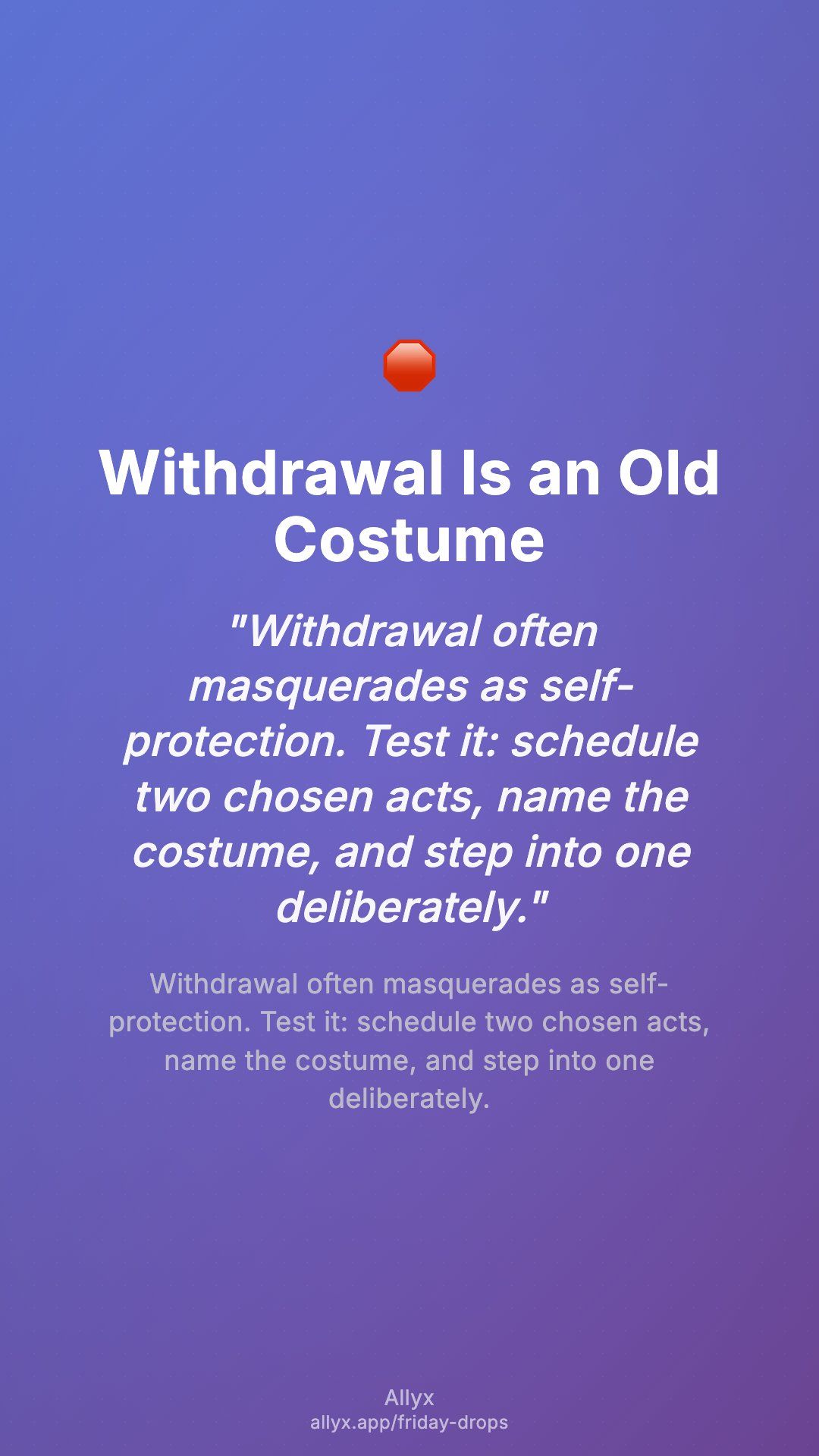Withdrawal Is an Old Costume
Withdrawal often masquerades as self-protection. Test it: schedule two chosen acts, name the costume, and step into one deliberately.
Thursday, September 18, 2025
Metaphorical Narrative
Withdrawal appears like a closed door you lock yourself into. The role says: “Hide. You are safer unseen.” But habit is not sanctuary — it’s rehearsal.
Core Insight
The ego uses withdrawal as camouflage, convincing you that absence equals safety. It plays on survival instincts by equating visibility with danger, so hiding feels virtuous. Over time, you begin to associate retreat with morality, even when no threat exists.
Ownership reframes the door. You may still step back, but you do it by choice, not compulsion. By scheduling two tasks and completing at least one, you prove the door is not locked. The body learns that safety can coexist with presence. This shift from passive retreat to active decision dismantles the costume.
Saturday Experiment
Two tasks in calendar. When withdraw wants to lock, say: “This is a role play,” tap the sternum twice, and pick one tiny social or practical act (message, step outside) and do it.
Sunday Reflection
- When did the door close and why?
- What did choosing one small act change about the day?
- How does intentional stepping differ from fleeing?

